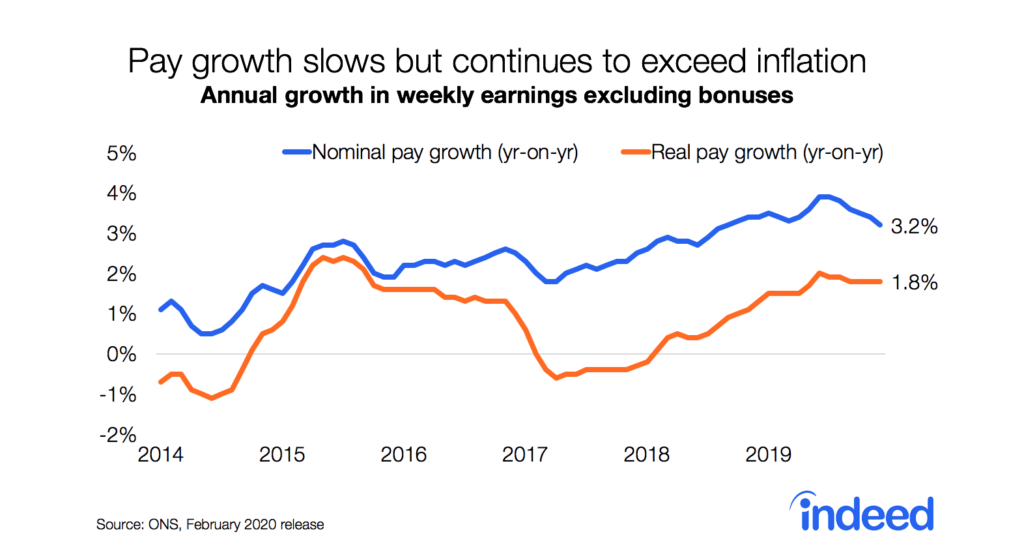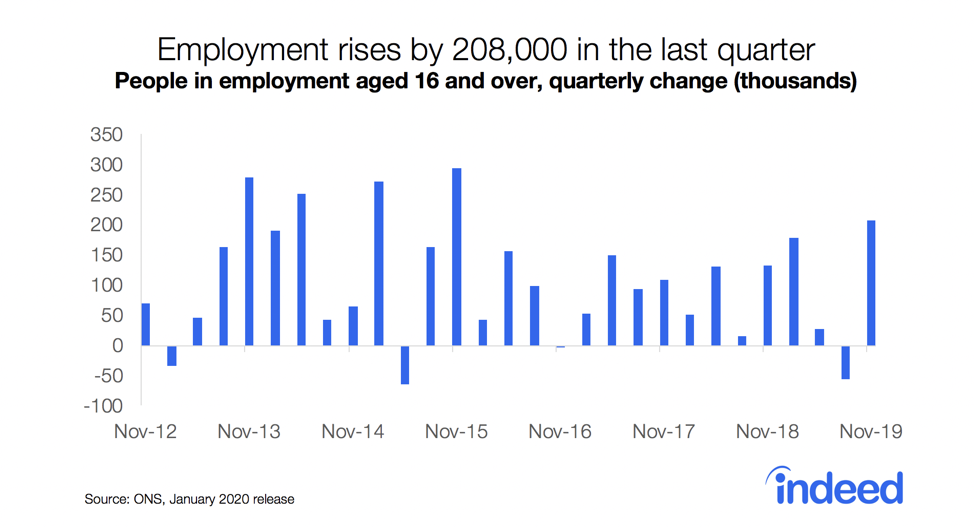Key Points
- Postings remain elevated at 47% above pre-pandemic baseline, but momentum appears to have stalled.
- Pandemic ‘winners’ like cleaning, distribution and healthcare remain well up, but other categories like legal, beauty & wellness and aviation are struggling to recover
- London and the South East continue to lag regionally.
We regularly update this report to track the pandemic’s effects on the labour market.
UK job postings remain high, though have stopped rising in recent weeks. Postings were 47% above the 1 February 2020, pre-pandemic baseline, seasonally adjusted, as of 18 March 2022. That’s down slightly from 50% as of 18 February 2022. After many months of strong growth, postings appear to have plateaued at a high level. With economic uncertainty rising, employers may be taking their foot off the accelerator for now, though many organisations may still have substantial staffing gaps to fill after a period of challenging hiring conditions.
Wide variation in performance across categories
Job posting recoveries have been highly uneven across occupational categories. In some, postings are at least double pre-pandemic levels, including cleaning & sanitation, loading & stocking, physicians & surgeons and dental.
But a handful of categories stand below pre-pandemic levels, including legal, beauty & wellness and childcare. Aviation postings are close to pre-pandemic levels, having picked up in recent weeks amid easing travel restrictions.
North East has strongest regional recovery
The North East continues to have the strongest regional recovery, with job postings 80% above the pre-pandemic baseline. London remains at the foot of the regional rankings, with job postings up 36%.
Variation in city performance
The strength of job posting recoveries continues to vary considerably at the level of cities and large towns. Wakefield, Barnsley and Middlesbrough are furthest above the pre-pandemic baseline. Aberdeen, Southend and Aldershot have the weakest job postings recoveries.
As we discussed in a previous post, posting recovery has generally been stronger in cities with higher shares of manufacturing, distribution and public sector jobs, while areas reliant on travel and tourism and highly paid, white-collar, work-from-home jobs trail.
We host the underlying job-postings chart data on Github as downloadable CSV files. Typically, it will be updated with the latest data one day after this blog post was published.
Methodology
All figures in this blog post are the percentage change in seasonally-adjusted job postings since 1 February, 2020, using a seven-day trailing average. 1 February, 2020, is our pre-pandemic baseline. We seasonally adjust each series based on historical patterns in 2017, 2018, and 2019. Each series, including the national trend, occupational sectors, and sub-national geographies, is seasonally adjusted separately. We adopted this new methodology in January 2021.
The number of job postings on Indeed.com, whether related to paid or unpaid job solicitations, is not indicative of potential revenue or earnings of Indeed, which comprises a significant percentage of the HR Technology segment of its parent company, Recruit Holdings Co., Ltd. Job posting numbers are provided for information purposes only and should not be viewed as an indicator of performance of Indeed or Recruit. Please refer to the Recruit Holdings investor relations website and regulatory filings in Japan for more detailed information on revenue generation by Recruit’s HR Technology segment.
*We looked at the relationship between job postings, clicks and wages in sectors experiencing the greatest hiring difficulties in a previous post.






